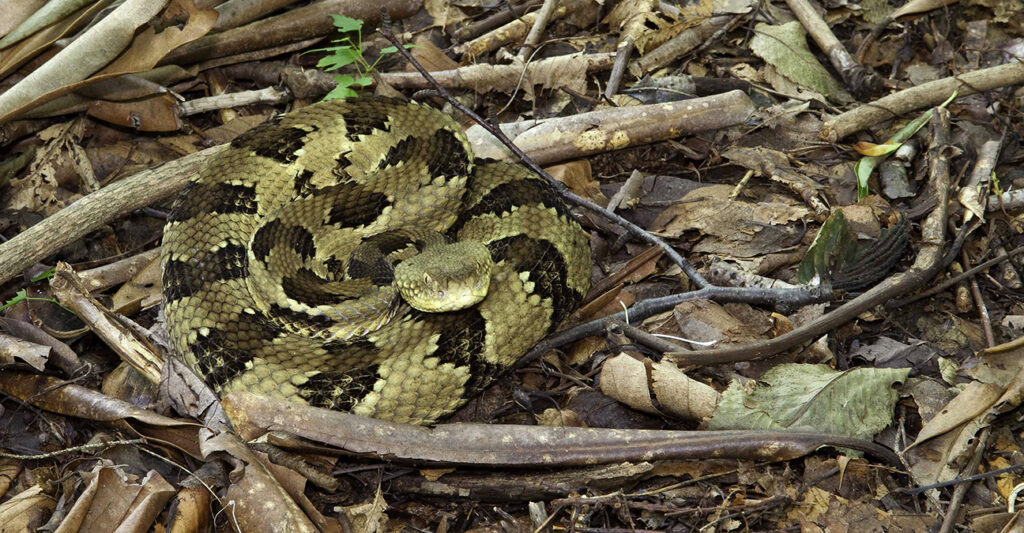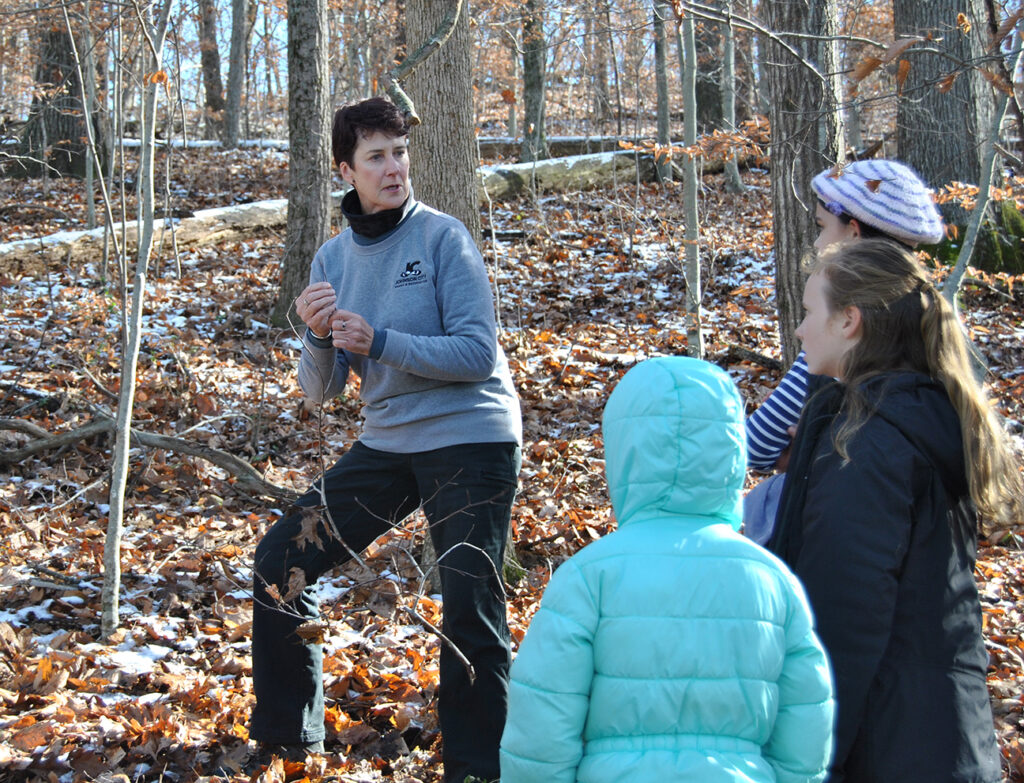
Photo by Harold Ross,Jr.
By Heather Richardson
Spring is on its way and with the warmer weather comes more animal activity.
While snakes may not be at the top of everyone’s favorite things about spring, Johnson City Park and Recreation Nature Program Coordinator Connie Deegan said there’s really no reason they shouldn’t be.
In an effort to provide a more accurate perspective about the area’s venomous snakes, Deegan led a discussion titled Coexisting with Snakes at Memorial Park Community Center last Tuesday morning. Deegan focused on the kinds of venomous snakes in the Northeast Tennessee region, how to avoid getting bitten, what to do if you are bitten, and how rare venomous snake bites actually are.
In Northeast Tennessee there are only two species of venomous snakes – copperheads and timber rattlesnakes. While many folks try to remember the list of identifiers for venomous snakes such as head shape, pupil shape, and scale patterns, Deegan said this isn’t very practical.
“It’s all nuts because if you think about it, how close to a snake do you have to be to look at these things?” she said, adding that there are always exceptions to those identifiers and many are very subjective.
Instead, Deegan suggested becoming familiar with the specific characteristics of copperheads and timber rattlesnakes. “If you want to learn venomous snakes from non-venomous snakes, for the next month look at three different pictures of copperheads and three different pictures of timber rattlesnakes, and you’ll figure it out.”
When heading outside for a hike or to work in the yard, Deegan suggested a few common-sense practices to avoid snake bites:
• avoid wearing headphones
• avoid moving snakes from paths
• be cautious around water sources on hot days
• look around rocks and logs before stepping over or sitting on them

Photo by Dave Ongie
According to data collected by Ballad Health from the 29 counties of the Appalachian Highlands, there were only 17 total snake bites requiring antivenom in 2021 and 2022.
In the unlikely event you do get bit, Deegan said it is important to stay calm.
“People injure themselves because they overreact trying to get away from it,” she said. “When you get bit, try to assess and then try to move 20 to 30 feet away from the snake. I know you’re going to feel like running, but you don’t have to.”
When bitten by a venomous snake, the primary goal is to avoid tissue damage.
To do this Deegan recommended:
• removing restrictive clothing and jewelry
• avoiding any blood-thinning medications
• avoiding tourniquets
• not applying ice to the bite
“If you allow the heart to move the stuff through your body, it’s going to dilute it through your body and you’re going to be better off,” Deegan said.
If you have a pen or marker with you, circle the area immediately and put the time down. Deegan suggested doing this every 15 to 30 minutes. “You are going to start to swell. When you see the swelling, draw the circle which is larger now and put that time down. That will really help the doctors treat you.”
If phone service is available, call 911. If not, try to find service or someone who can hike out and call for help.
“You can walk out with a venomous snake bite,” Deegan said, reiterating that the goal is to avoid tissue damage. “You have about six hours to get treatment.”



